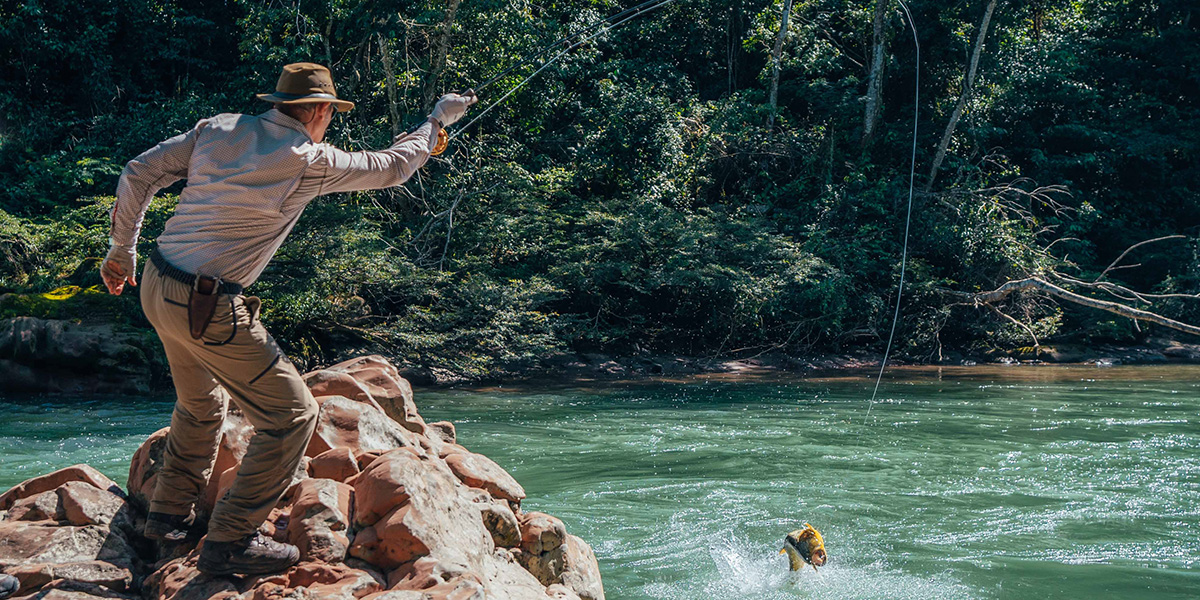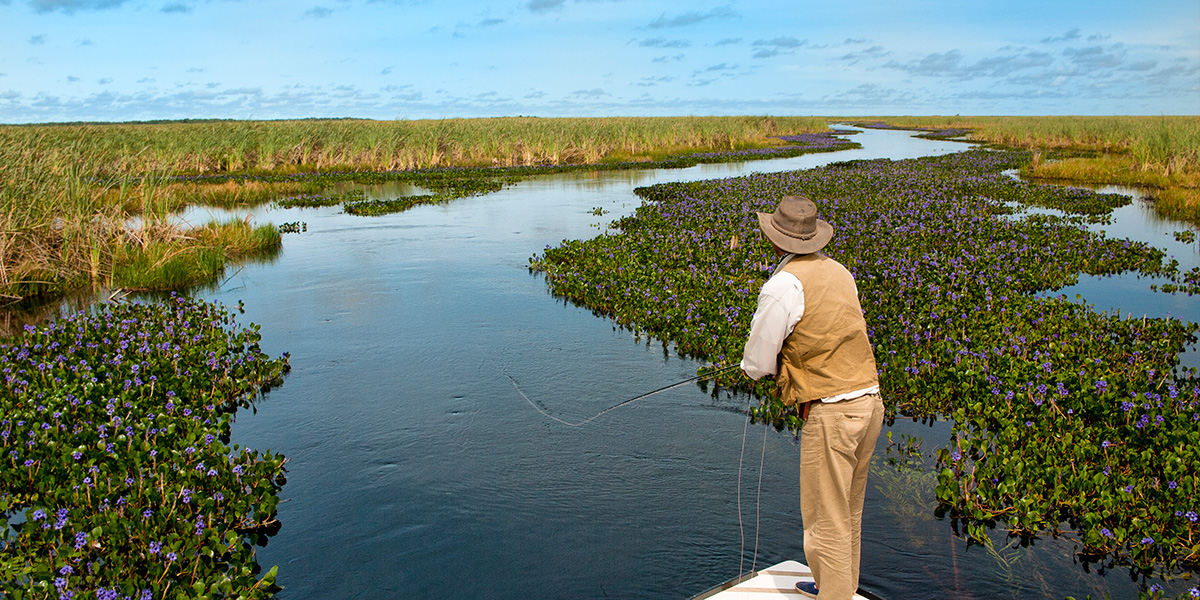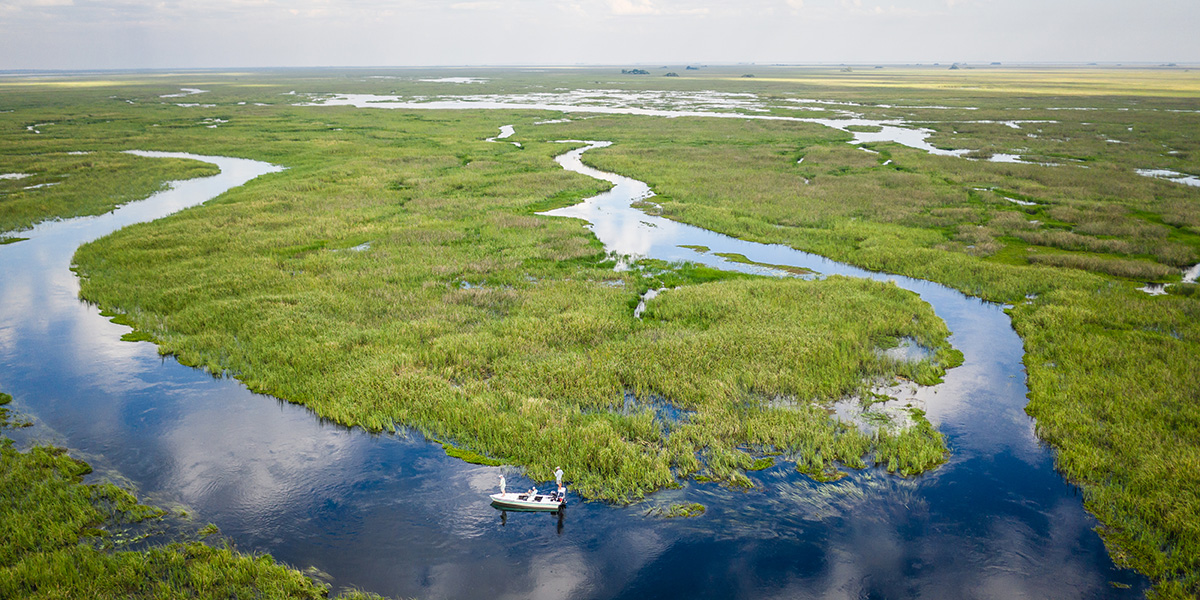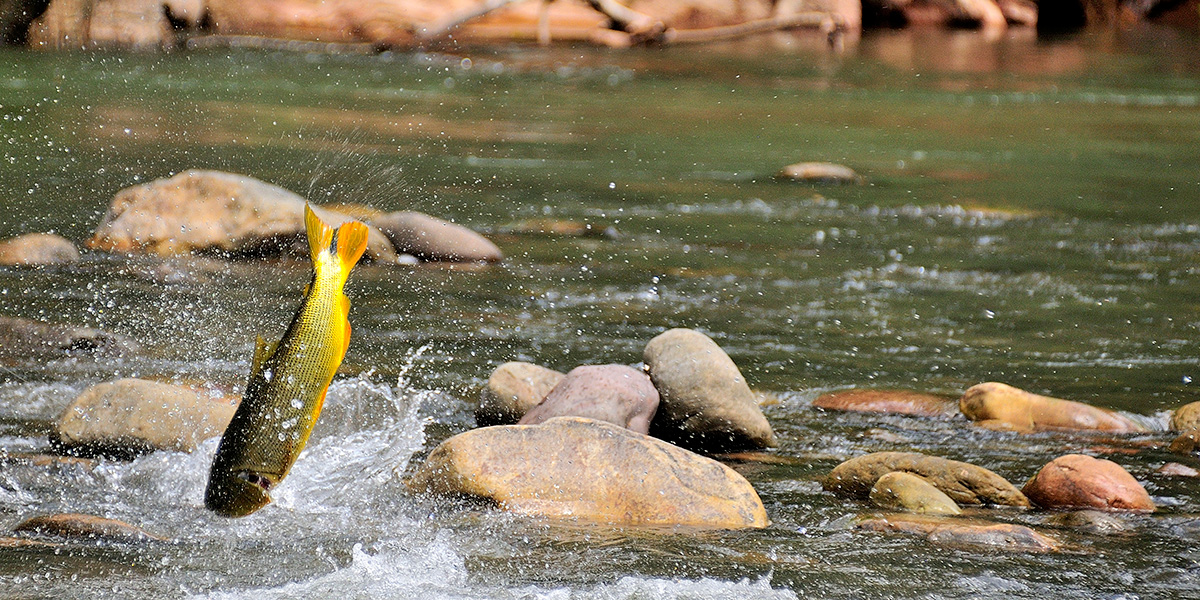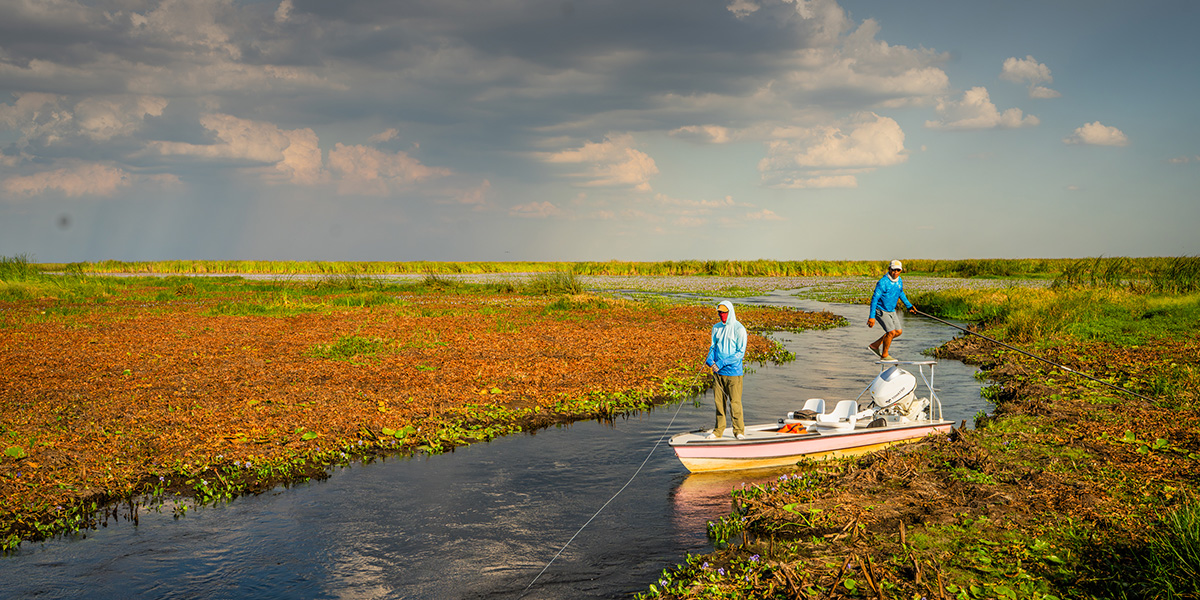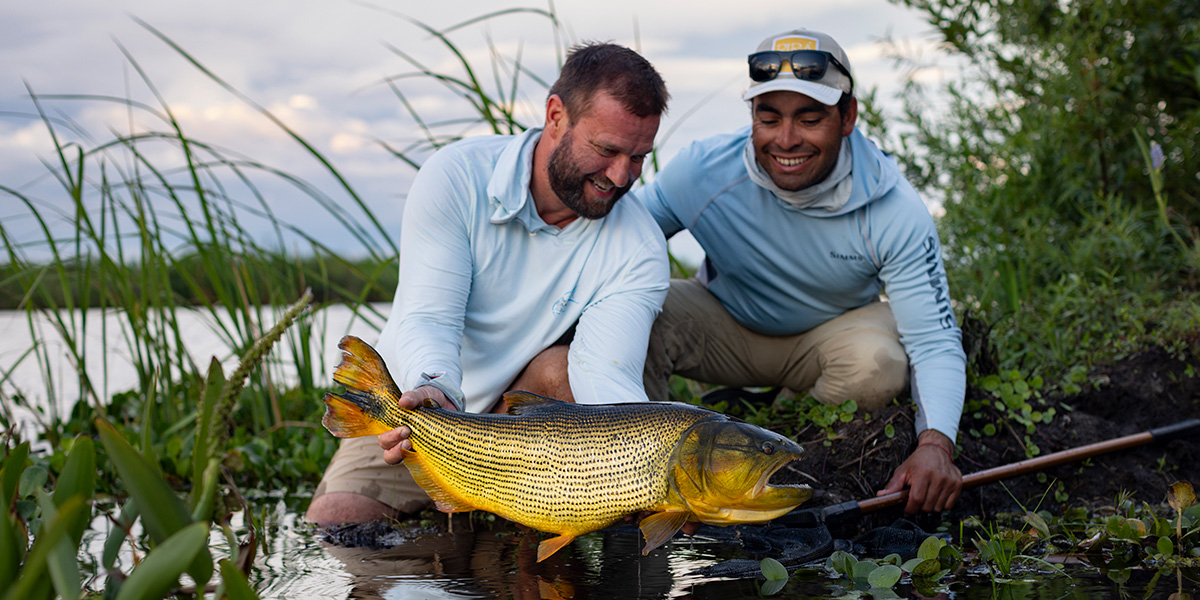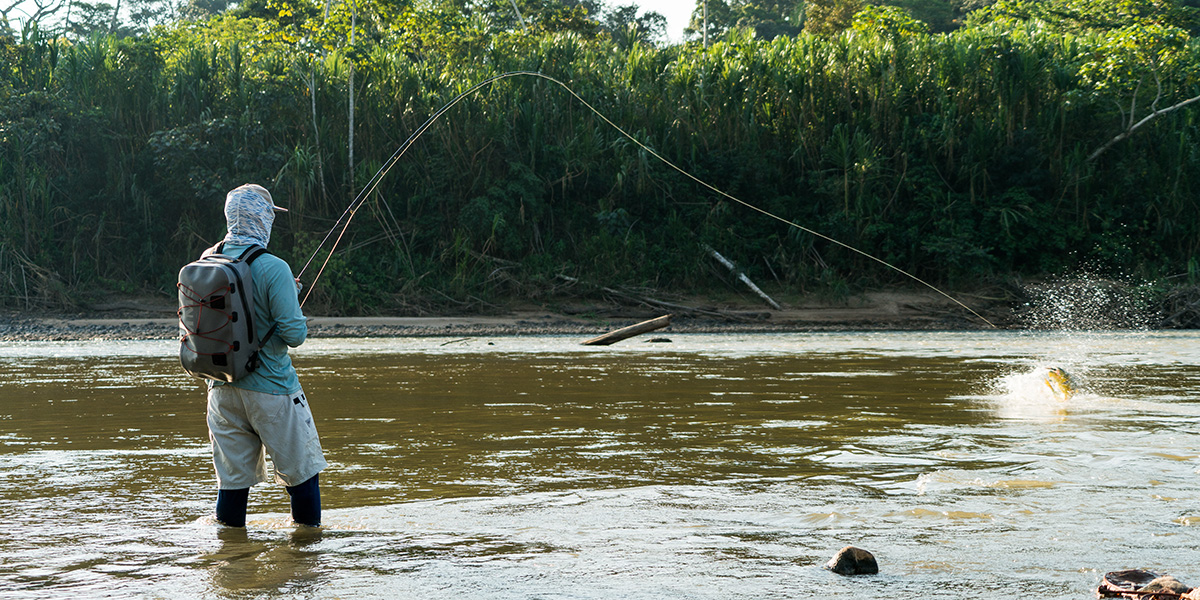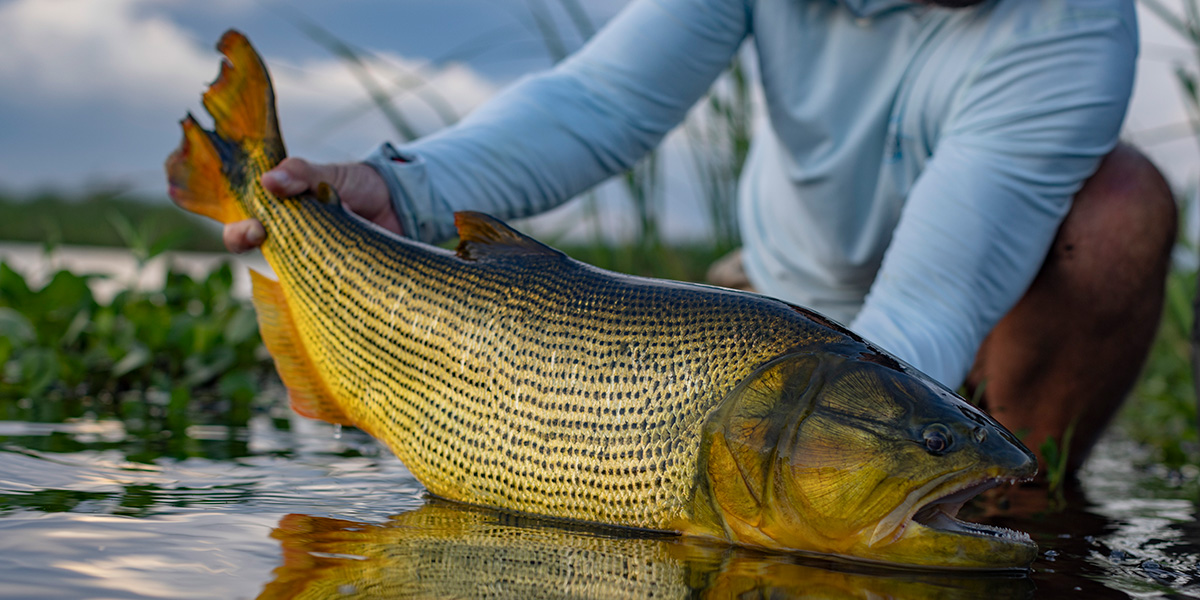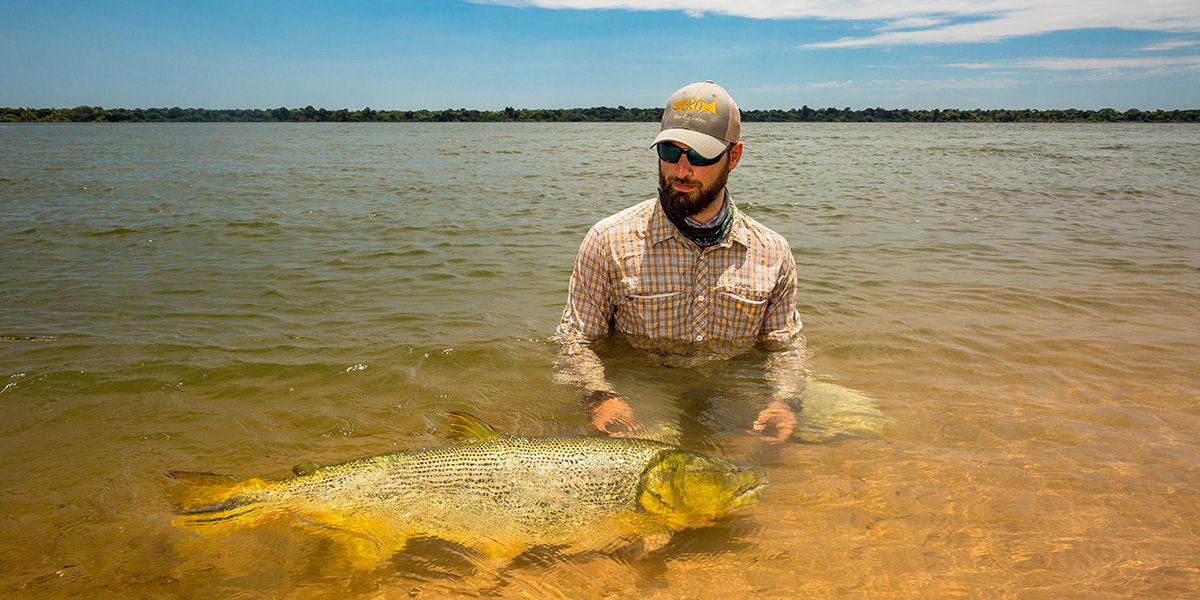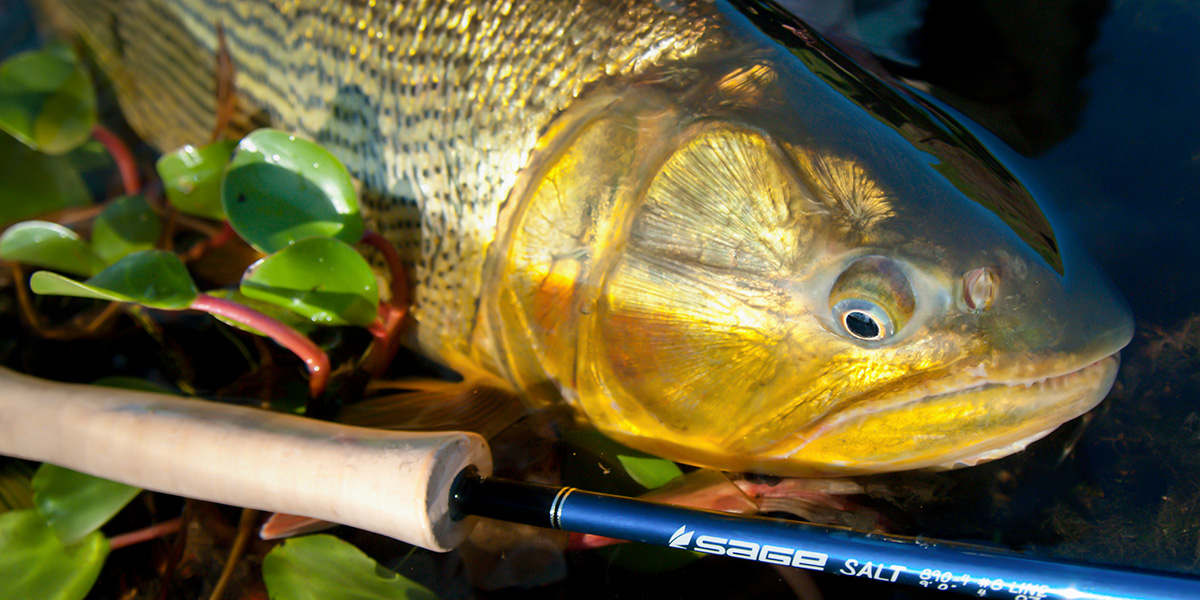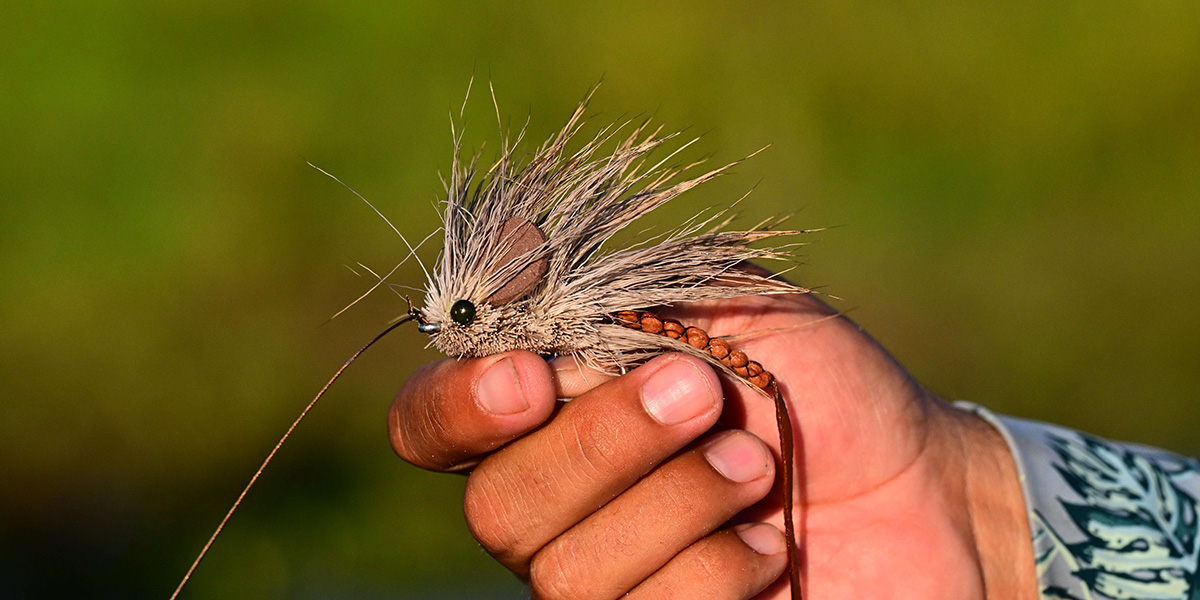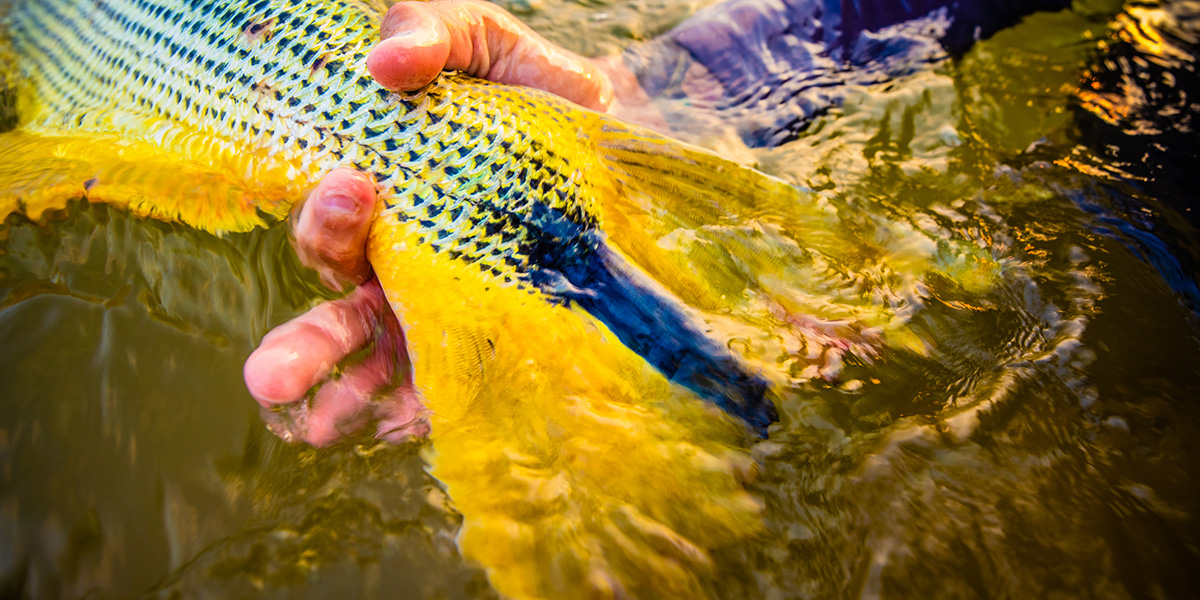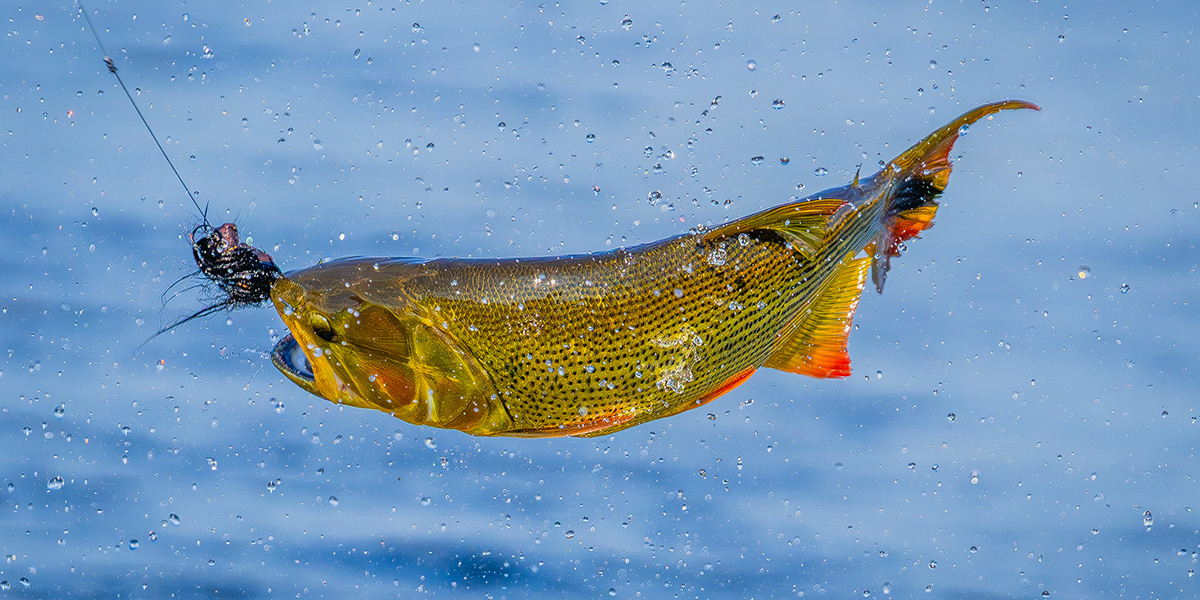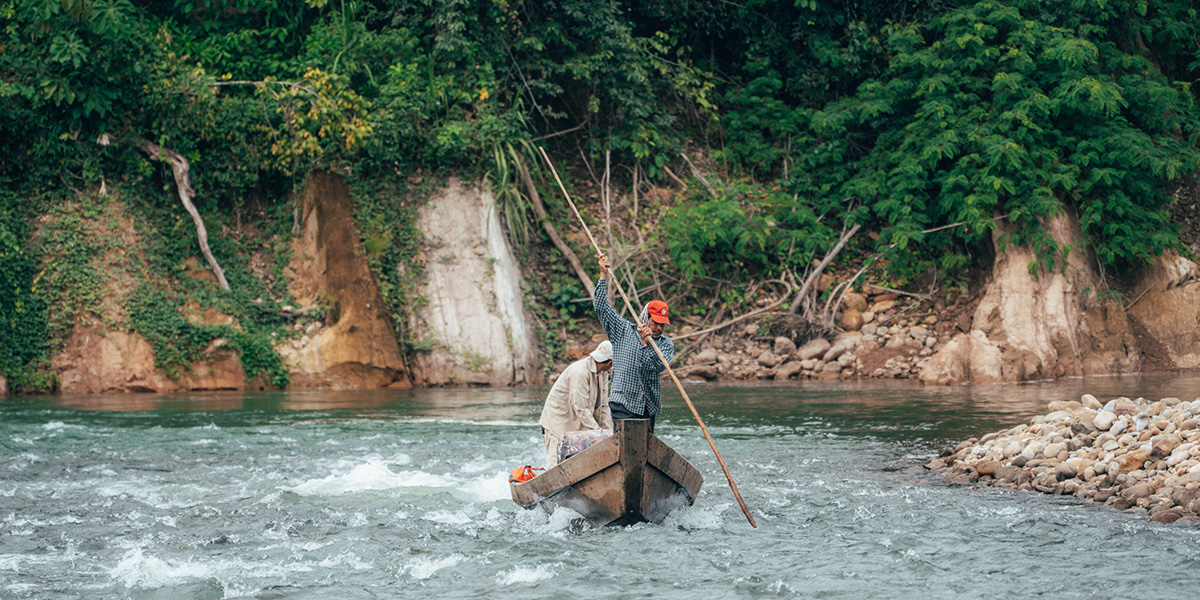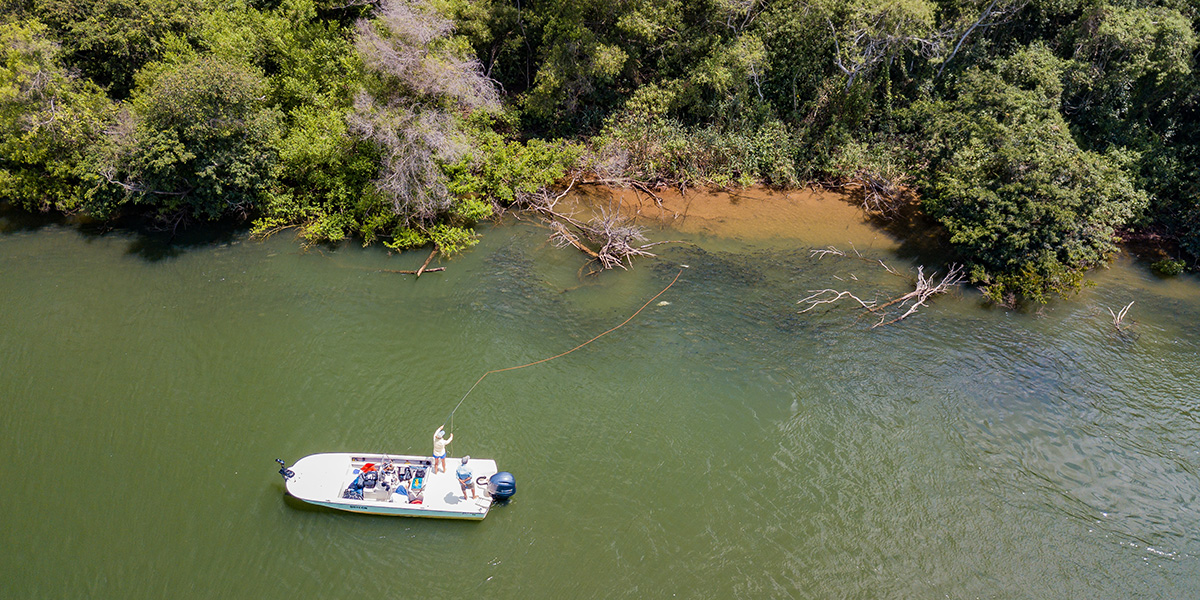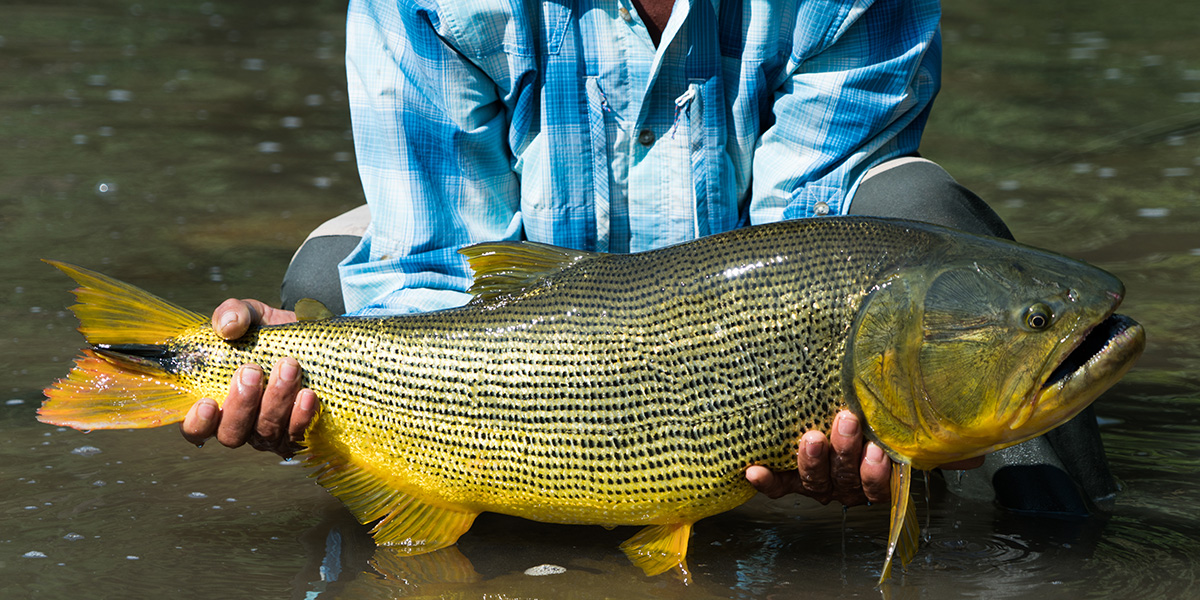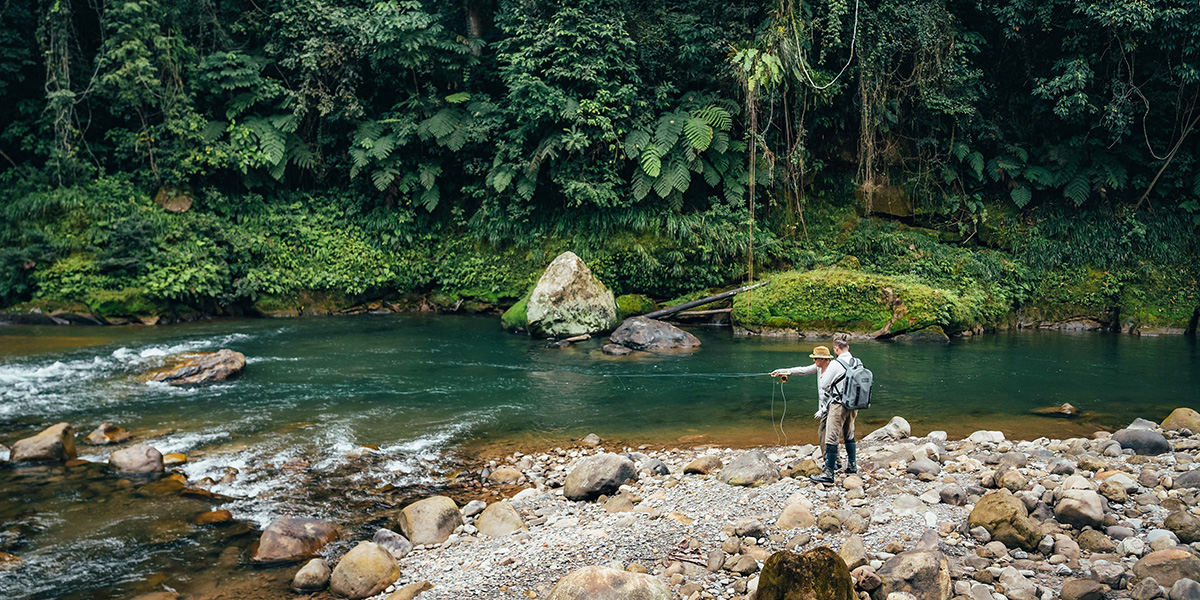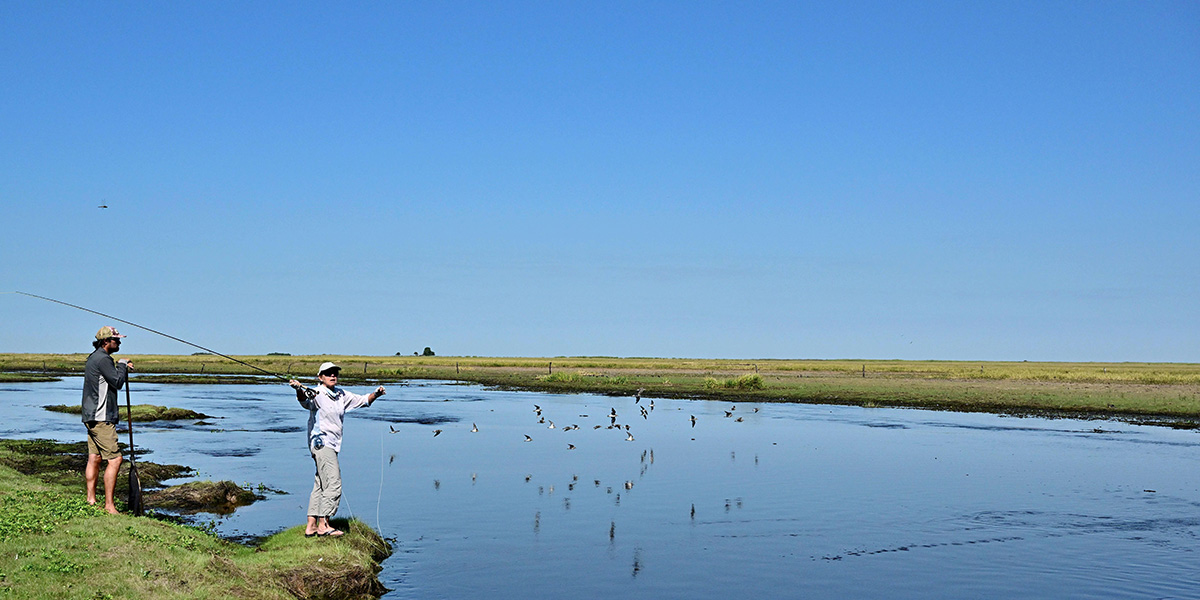A Guide to Golden Dorado Fly Fishing: Argentina vs. Bolivia
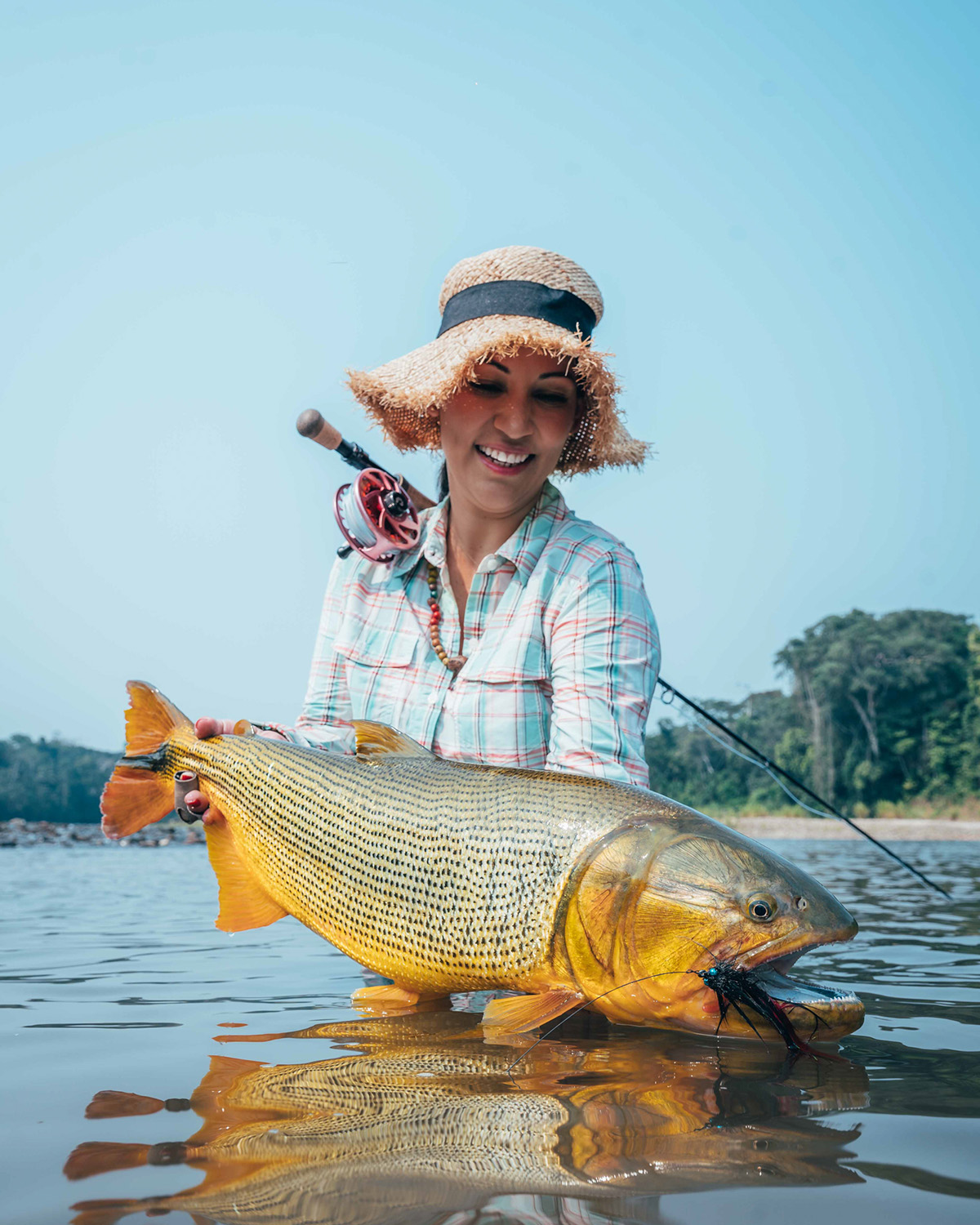
There are few moments in fly fishing like watching a dorado turn in clear water and crush a fly. It’s a mix of power, speed, and raw aggression that keeps anglers coming back year after year. But the experience of chasing these golden predators can feel very different depending on where you go.
In Argentina, dorado fishing often means working the edges and flats of big rivers or meandering through vast marshlands, casting from bay and flats skiffs and covering miles of productive water. In Bolivia, it’s a fly fishing only jungle expedition — wet-wading clear freestone creeks, hiking, boating, or helicopter between pools, and fishing amongst the cries of monkeys and macaws. Both deliver the same heart-stopping eats; however, the setting, the style, and the level of challenge are worlds apart.
Low gradient rivers and marshes vs. Jungle Freestones
In Argentina, dorado are pursued on productive river systems like the Paraná and Corriente or the vast Ibera and Ysoro Marshes. Anglers spend much of their time on skiffs or bay boats, covering water and hunting for cruising or ambush fish along banks, sandbars, and current seams. These fisheries are accessible — often just a short flight or transfer from Buenos Aires — and range from day trips near the city (Delta Lodge) to live-aboard mothership programs (Golden Dorado River Cruiser) and luxury marsh lodges like Pirá, Suinda, and Karanda Lodges.
Bolivia, by contrast, is a jungle expedition. The rivers are smaller, crystal clear, with a steeper gradient tucked deep into National Parks and Indigenous Territories where the Andes meet the Amazon. Simply reaching these fisheries involves charter flights, dugout canoe rides to your chosen lodge, and, for some programs, even helicopter transfers at times. The setting is immersive and remote — monkeys rustling in the canopy, birds calling overhead, and a sense of stepping into another world entirely.
From Skiffs vs. On Foot
The most evident difference is how you fish. In Argentina, almost all dorado fishing is done from skiffs and bay boats — prospecting to structure and covering lots of water on a casting platform with a guide on a poling platform, much like the Caribbean flats. In Bolivia, a majority of the fishing is done on foot. Anglers wet-wade freestone rivers, stalking fish in clear water, sight-casting like you might for holding trout or salmon – on steroids. It is technical, physical, and intensely rewarding. In both atmospheres, plenty of takes are visual — you see the fish turn, charge, and crush the fly.
Gear Considerations
The gear you bring — and how you rig it — should reflect where you’re going:
- Argentina:
- Rods: 7–9 wt. Rods are the workhorses for dorado and Pacui, with the occasional lighter 5-6 wt. for species like pira pita and parana.
- Lines: Warm water floating and intermediate lines in the marshes or jungle canals, and occasionally sink-tips for the rivers.
- Setup: Large-arbor reels with smooth drags, 30–40 lb. knotable wire leaders (a must), and a good selection of articulated and hair bug streamers and baitfish patterns. And don’t forget your topwater patterns such as larger mouse, Gurgler, and popper patterns.
- Clothing: Tropical-weight flats clothing, sun and bug protection, and rain gear for sudden storms — most fishing is boat-based, so wading gear is minimal; however, sun and arch protective shoes are optimum
- Pro Tip: Bring two buffs with you. Wet one and put it in your cooler while you wear the other and rotate as needed. The buffs not only offer cooling and sun protection but also act as a shield for one’s face while running skiffs through the tight marshland channels.
- Bolivia:
- Rods: 7–9 wt. rods but often carried as two setups — one rigged with a floating line, the other with a clear-tip intermediate — to be ready for quick changes.
- Lines: Warm water floating lines are standard with a backup rod rigged with an intermediate sinking line. Presentations must be precise; carrying extra backups is smart given the remote nature of the fishery and lack of a fly shop for thousands of miles.
- Setup: Heavier shock leaders (40 lb. fluoro with wire tippet), plus durable felt soled boots and wet-wading socks — you will be hiking and wading all day.
- Clothing: Quick-dry technical wear, long sleeves and long pants or wading tights, sun gloves, and hoodies — gear needs to perform in heat and humidity and to cover up comfortably. “Bug-off” style clothing can be helpful as can applying your favorite bug lotion or spray a few times a day.
Challenge & Reward
Bolivia is generally the more physically demanding trip. The jungle environment requires good physical conditioning and a willingness to hike and wade all day. The shots can be fewer but more deliberate — every encounter feels earned. Argentina offers a bit more comfort and accessibility: more shots, comparatively easy access, and excellent accommodations ranging from luxury eco-lodges to fully re-fitted live-aboard vessels.
Species & Variety
Both destinations target golden dorado, and Bolivia adds the chance to sight-cast to other jungle species like pacu (fruit and nut-eating “freshwater permit”), yatorana, and even surubi catfish. Argentina’s river systems offer diversity, with pacu, pira pita, tararira (wolf fish), and sometimes even cast-and-blast options combining doves or ducks with fishing, and let’s not forget Patagonia trout.
The Bottom Line
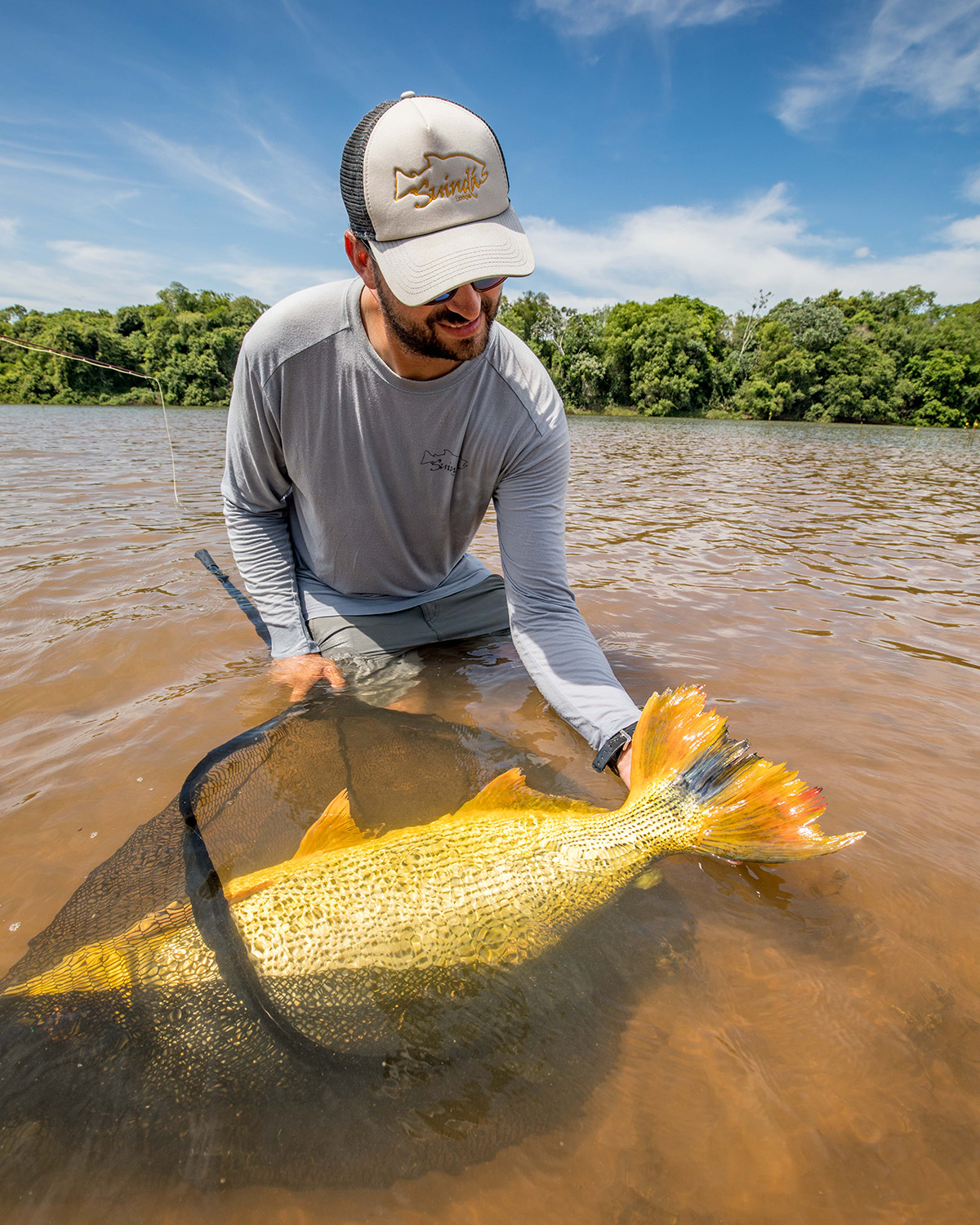
Choose Argentina for easier internal logistics, varying length of stay, boat-based fishing, and an experience reminiscent of our Everglades or Caribbean flats fishing. Choose Bolivia for a more physically challenging, immersive jungle expedition where every fish feels like a well-earned reward. Both deliver the heart-stopping take and acrobatic antics of the golden dorado — it just comes down to the experience and expectations of the angler. That is where we come in…
If you’d like to learn about fishing for Golden Dorado in Bolivia, please contact Tom Gilliland.
If you’d like to learn about fishing for Golden Dorado in Argentina, please contact Hank Ingram.




